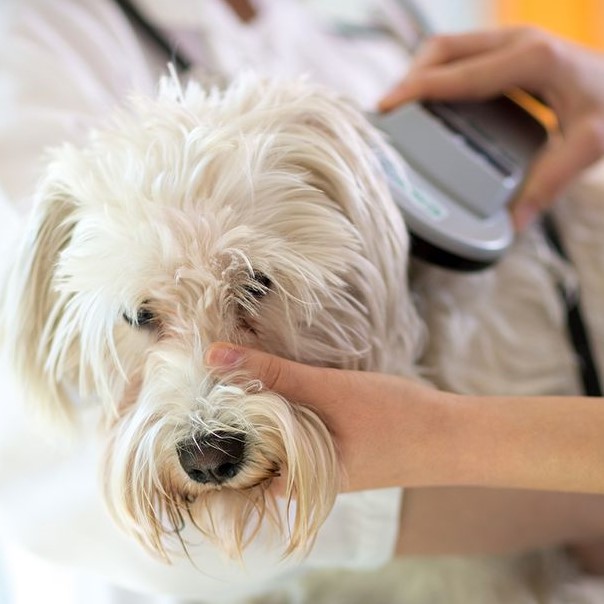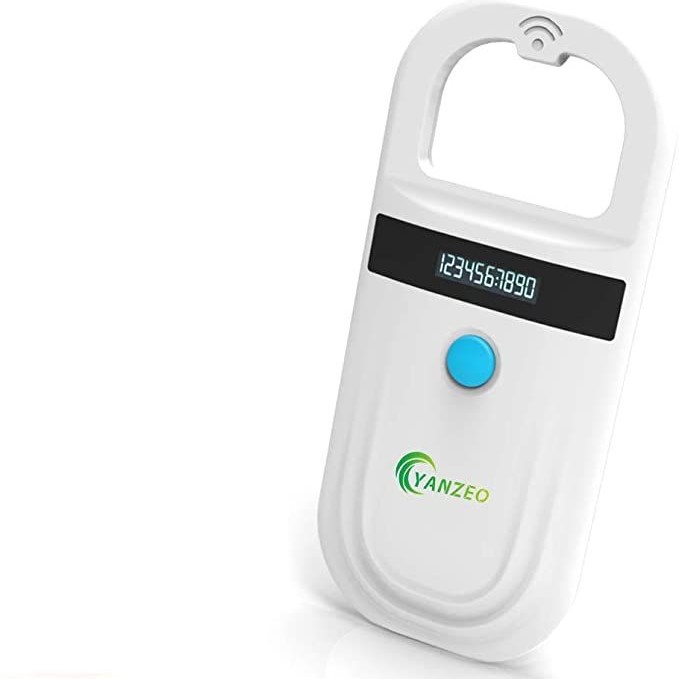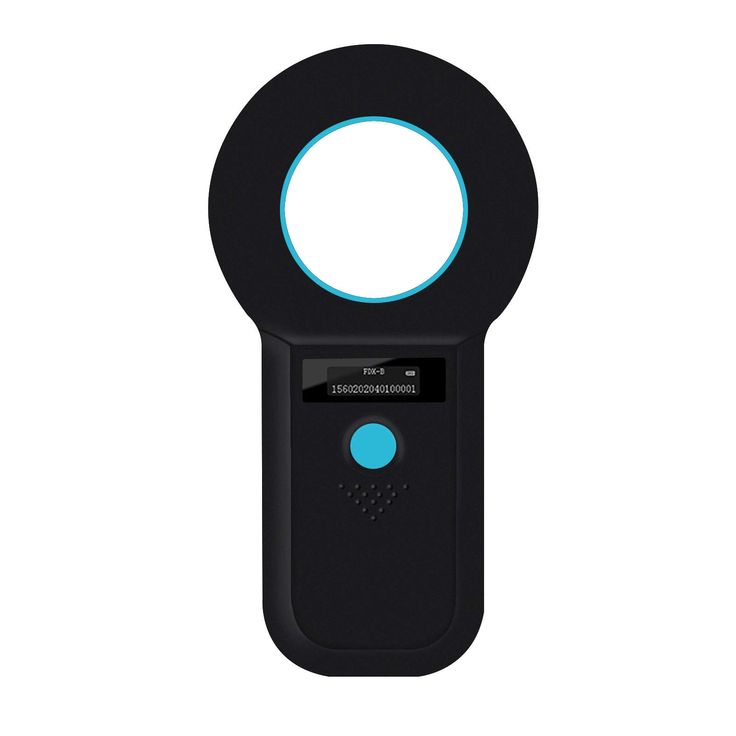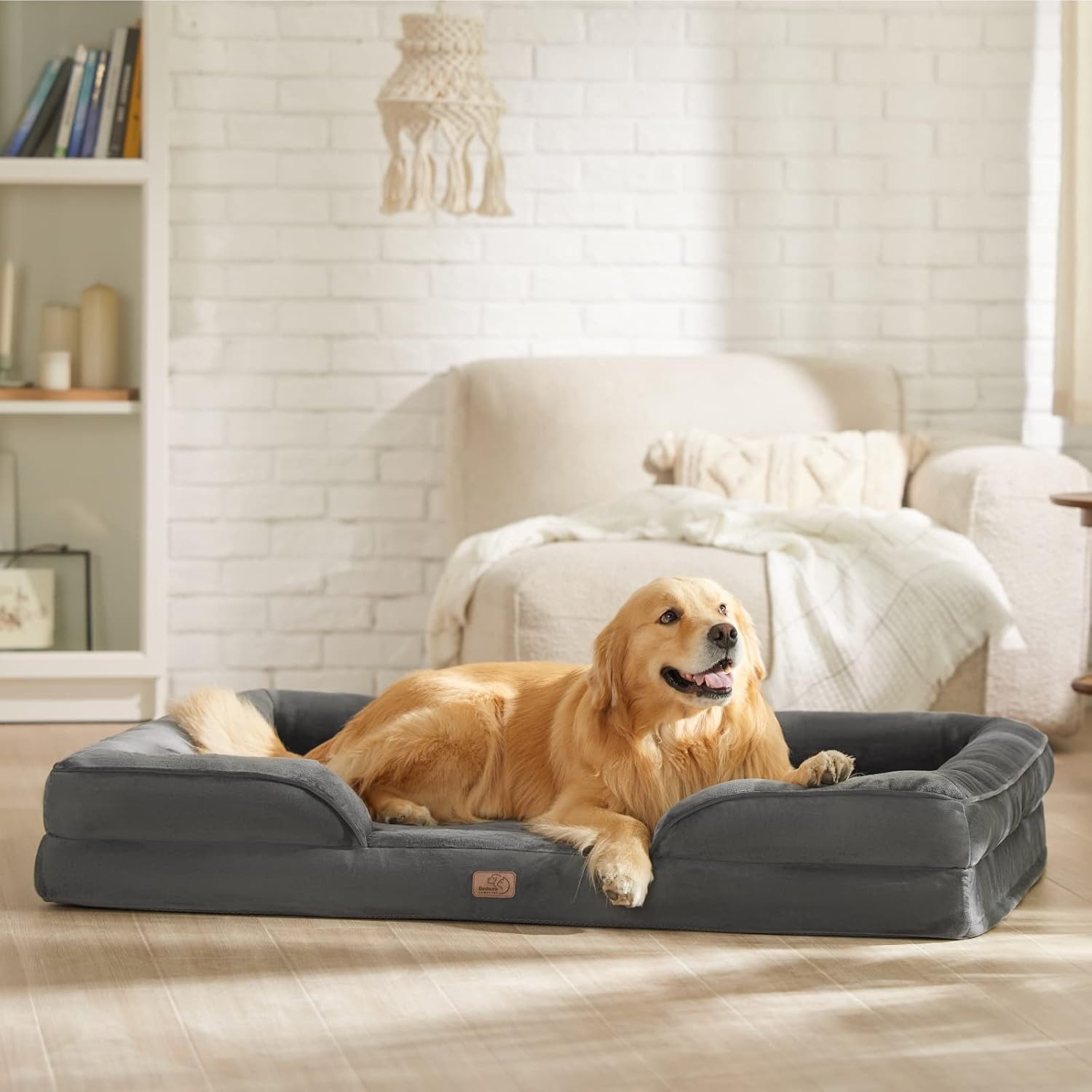Introduction
In today’s world, ensuring your pet’s safety is a top priority for responsible pet owners. One effective way to achieve this is by using a pet microchip scanner. Understanding how these scanners work can provide peace of mind, enabling pet owners to take proactive measures to protect their furry friends.

A pet microchip scanner is a simple yet vital tool that helps identify pets who may become lost. Given the emotional bond between pets and their owners, it’s essential to understand the scanning process and its significance in ensuring your pet’s safe return.
What are Pet Microchips?
Pet microchips are small devices implanted under a pet’s skin. They store essential identification data about the pet. These tiny chips play a crucial role in reuniting lost pets with their owners. Since they are permanent, unlike collars or tags, they are a reliable tool for pet identification.
The Purpose of Pet Microchips
The primary purpose of a pet microchip is to provide a unique ID for your pet. This ID links to an online database containing your contact information. Veterinarians and shelters can scan this chip to access these details. The goal is to reunite lost pets with owners quickly.
These devices also help confirm ownership in disputed cases. They are especially useful when tags are lost or damaged. Additionally, they may be required in some areas for pet travel or registration compliance.
Key Features of Pet Microchips
Pet microchips have several key features that ensure effective functionality:
- Size and Durability: The chip is about the size of a grain of rice. It is made of biocompatible materials, ensuring no harm to the pet.
- Unique ID Code: Each chip carries a unique identification number. This number links to the pet owner’s contact information in the registry.
- No Internal Power Source: Microchips are passive and do not use batteries. They activate only when scanned by a pet microchip scanner.
- Lifetime Functionality: Once implanted, they last a lifetime without needing replacements.
These features make microchips a reliable and effective tool for pet identification. However, it is critical to register and update the microchip information regularly for it to be useful.
How Do Microchip Scanners Work?
Pet microchip scanners play a vital role in identifying lost pets. These devices detect and read the unique ID code stored in a pet’s microchip. Once scanned, this ID links to the owner’s contact information in a database. Understanding how scanners work ensures efficient use for pet safety and recovery.
Technology Behind Microchip Scanners
Pet microchip scanners use RFID (Radio Frequency Identification) technology. This technology allows the scanner to communicate and read data from the microchip. Here’s how the process works:
- Activation: The scanner emits a low-frequency radio signal. This signal activates the passive microchip implanted in the pet.
- Data Reading: When activated, the microchip transmits its unique ID code back to the scanner.
- Display: The scanner displays the identification number on its screen. This number is later used to access the linked registry information.
The efficiency of RFID technology ensures that scanners detect microchips quickly. However, successful scanning depends on using a compatible scanner and microchip pair.

Types of Microchip Scanners
There are different types of pet microchip scanners available today. Each type serves unique purposes:
- Universal Scanners: These scanners read a wide range of microchip frequencies. They are versatile and work with most microchips globally.
- Selective Scanners: These scanners are designed to read specific microchip frequencies. They may have compatibility limitations but are often cheaper.
- Portable Scanners: Lightweight and battery-operated, portable scanners are easy to carry and use. Animal shelters and veterinarians often prefer them for field scanning.
- Integrated Scanners: These scanners are part of other veterinary tools. For example, some X-ray machines may include microchip scanners for convenience.
Selecting the right scanner depends on your specific needs. For widespread compatibility, universal scanners are the best choice.
Benefits of Microchip Scanning for Pet Owners
Pet microchip scanning offers immense benefits for pet owners. It ensures a reliable method of identifying and recovering lost pets. By integrating microchips with a database, pet owners enjoy a sense of security and peace of mind. Below are two key benefits of microchip scanning:
Ensuring Pet Safety
- Permanent Identification: Unlike collars or tags, microchips provide a permanent form of ID. They cannot fall off or get damaged.
- Protection Against Pet Theft: Microchips help confirm ownership, protecting pets in theft cases.
- Compliance with Regulations: In many areas, microchips are required for pet travel or licensing. Scanners play a crucial role in meeting these legal needs.
- Quick Identification in Emergencies: Shelters and veterinarians can scan a pet’s microchip to identify its owner immediately.
Microchip scanning ensures that pets are traceable, even in unforeseen situations. This makes it a necessary tool for pet safety.
Streamlining Pet Recovery Process
- Efficient Reunions: When scanned, a microchip reveals the pet owner’s contact details. This speeds up the reunion process.
- Ease of Database Accessibility: Scanned microchip information links directly to online registries for convenient access.
- Reduced Stress for Pet and Owner: Owners don’t need to rely on luck or loose tags. This eliminates unnecessary delays.
- Valuable in Disputes: Microchip data can help settle ownership disputes quickly and effectively.
The streamlined recovery enabled by microchip scanners saves time and effort for all parties involved. This ensures that lost pets return home safely and swiftly.

Common Frequency Standards for Microchips
Microchips operate on specific frequency standards. These frequencies determine compatibility with scanners. Knowing these standards ensures proper functionality and ease of use.
ISO-Compliant Microchips
ISO-compliant microchips follow international standards for frequency and technology. These standards guarantee wide compatibility and reliable performance. Key details include:
- Frequency Range: ISO microchips usually operate at 134.2 kHz. This standard frequency ensures scanners can detect them globally.
- Standardized Technology: They use FDX-B (Full-Duplex) technology, which ensures efficient data transmission and reading.
- Global Recognition: Many countries mandate ISO microchips for pet travel and registration.
ISO microchips offer consistency, especially for pet owners who travel internationally. They reduce compatibility concerns and are widely accepted by shelters and veterinarians.
Compatibility Issues Between Microchips and Scanners
Compatibility between microchips and scanners is not always guaranteed. Different factors can lead to scanning issues:
- Frequency Mismatch: Some microchips operate at frequencies other than 134.2 kHz. Scanners might not detect them effectively.
- Non-Universal Scanners: Selective scanners often read only specific frequencies, limiting their usability.
- Old Scanner Technology: Older scanner models might struggle with newer microchip protocols, causing detection failures.
- Manufacturer Variations: Microchip and scanner makers use proprietary technology, creating compatibility challenges.
Understanding these compatibility issues helps pet owners choose scanners wisely. Opting for universal scanners ensures better detection across microchip types.
The Process of Scanning a Microchip
Scanning a pet’s microchip is a straightforward but crucial process. It ensures the correct identification of lost pets. This task requires using the right technique and technology to guarantee accuracy and efficiency.
Step-by-Step Guide to Using a Scanner
- Prepare the Scanner: Turn on the microchip scanner and ensure it has sufficient battery. Confirm it is functioning properly before use.
- Hold the Scanner Correctly: Hold the scanner close to the pet’s body. Position it near the shoulder blades, as microchips are usually implanted there.
- Move the Scanner Slowly: Scan in slow, circular movements over the implant area. This ensures the scanner can detect the chip.
- Check the Display Screen: Once the scanner detects the microchip, its unique ID will appear on the screen. Take note of this ID for further steps.
- Access Database Information: Use the displayed ID to search the linked registry. This will reveal the owner’s information or other pet details.
By following these steps, pet professionals and owners can quickly and effectively identify lost pets.
Best Practices for Accurate Scanning
- Use a Universal Scanner: Choose a universal pet microchip scanner to ensure compatibility with most microchips.
- Repeat Scanning: If no chip is detected, attempt scanning from different angles. Move slowly to avoid missing the chip.
- Avoid Metal Interference: Keep the scanner away from metal objects, which may disrupt the signal reading.
- Update the Scanner Regularly: Ensure the scanner software is up-to-date. This maintains its compatibility with advanced microchips.
- Practice Proper Technique: Learn correct scanning techniques from a veterinarian or professional.
Accurate microchip scanning provides the best chance of reuniting pets with their owners. Following these practices ensures efficient scanning every time.
Challenges and Limitations of Microchip Scanning
Microchip scanning has revolutionized pet identification, but it does have its challenges. These limitations can hinder effective use and recovery of lost pets. Understanding these issues is vital for better preparation and decision-making.
Issues with Faulty Microchips
Faulty microchips can prevent successful identification of pets. Common problems with microchips include:
- Manufacturing Defects: Rarely, chips may be defective due to production errors. These faults disrupt normal functioning.
- Improper Implantation: If a chip is implanted incorrectly, it may move or fail to respond to scanning.
- Damage Over Time: Physical damage or degradation of the chip may occur, although microchips are designed to last.
- Unregistered Microchips: If a chip hasn’t been registered or updated, scanning will not yield useful information.
Addressing faulty microchips requires regular checks and re-registration when necessary. Always consult a professional during implantation to reduce risks.

Difficulties in Scanner Detection
Certain factors may limit the scanner’s ability to detect a microchip. These include:
- Frequency Mismatch: If the scanner and microchip operate on different frequencies, it may fail to detect the chip.
- Low-Quality Scanners: Inexpensive scanners may struggle to read certain microchip types or older models.
- Poor Scanning Technique: Incorrect scanning, such as moving too quickly, can lead to missed detections.
- Interference: Nearby metal objects or strong electrical signals can disrupt the scanner’s functionality.
To combat detection issues, using universal scanners and practicing correct techniques is essential. Regularly updating scanner software also improves compatibility and performance.
Understanding these limitations ensures pet owners choose the right tools and minimize scanning problems.
Choosing the Right Microchip Scanner for Pets
Selecting the best pet microchip scanner is essential for accurate and efficient identification. With a variety of scanners available, understanding key features and brands can help pet owners make informed choices.
Features to Look for in a Scanner
- Universal Compatibility: Choose scanners that read all microchip frequencies for global versatility.
- Portability: Opt for lightweight, battery-operated scanners for easy use anywhere.
- Ease of Use: Look for scanners with simple controls and clear display screens.
- Durability: Select scanners built with sturdy materials for long-term reliability.
- Advanced Technology: Ensure the scanner uses the latest RFID capabilities to detect modern microchips.
- Scanning Speed: A good scanner detects microchips quickly and accurately.
- Battery Life: Prefer scanners with extended battery life to avoid disruptions during use.
These features ensure that the scanner performs efficiently in diverse conditions, helping track pets reliably.
Popular Brands and Models of Scanners
- HomeAgain? Universal Scanner: Known for broad compatibility and user-friendly functions.
- Halo Microchip Scanner: Compact and portable, preferred by veterinarians and shelters.
- PetScan Digital Scanner: Offers quick detection and digital storage of results.
- Trovan? LID Scanner: Designed for advanced microchip scanning with robust data processing.
- Datamars Compact Reader: Provides durable performance and easy handling.
By choosing reputable brands, pet owners ensure trusted functionality and quality. Each brand offers distinct benefits, catering to different needs.
Tips for Microchipping and Registering Your Pet
Microchipping and registering your pet is a vital step in responsible pet ownership. Following these tips ensures your pet remains traceable and identifiable in any situation.
Importance of Updating Microchip Information
Keeping your pet’s microchip information current is essential for their safety and recovery. Here’s why:
- Accurate Contact Details: Always update your phone number and address when they change.
- Quick Recovery: Outdated information delays the process of reuniting with your lost pet.
- Legal Requirements: Some areas mandate accurate details in microchip databases.
- Eases Identification: Current data helps shelters and vets identify you promptly as the pet owner.
Regularly reviewing and updating the microchip database ensures your pet remains reachable at all times.
Ensuring Proper Registration
Proper registration involves linking your pet’s microchip to your contact details. Follow these steps:
- Choose a Reliable Registry: Use a trusted and widely recognized pet microchip database.
- Double-Check Details: Ensure the microchip ID matches your pet’s registry profile.
- Provide Secondary Contacts: Add an additional contact for emergencies.
- Keep Records Safe: Save the microchip number and registry login details securely.
Verify your registration periodically to prevent errors or lapses. This helps maintain a functional identification system for your pet.
Conclusion: Safeguard Your Pet with Microchip Technology
In conclusion, understanding pet microchip scanner is imperative for all pet owners. A pet microchip scanner is not just a tool; it represents a vital connection between pets and their families. The scanning process, facilitated by RFID technology and supported by comprehensive databases, ensures lost pets can be identified quickly and reunited with their owners.

Investing in a microchip for your pet is a simple yet effective measure. It enhances their safety, acts as a safeguard, and strengthens the bond that exists between you and your furry companion. In this digital age, making use of technology to protect our pets is a responsibility we all share. Embrace microchip technology today, and ensure that your pets have the best chance of returning home, no matter where their adventures take them!









